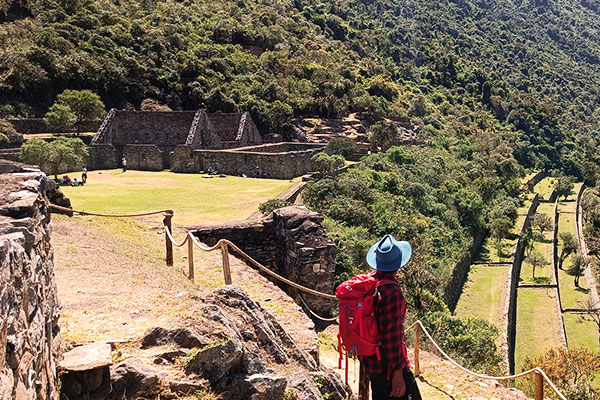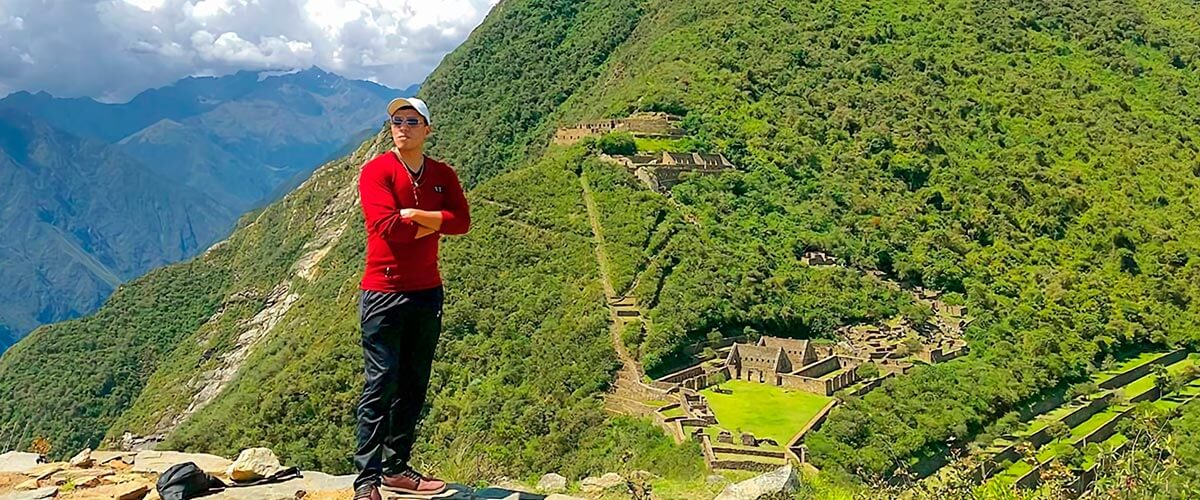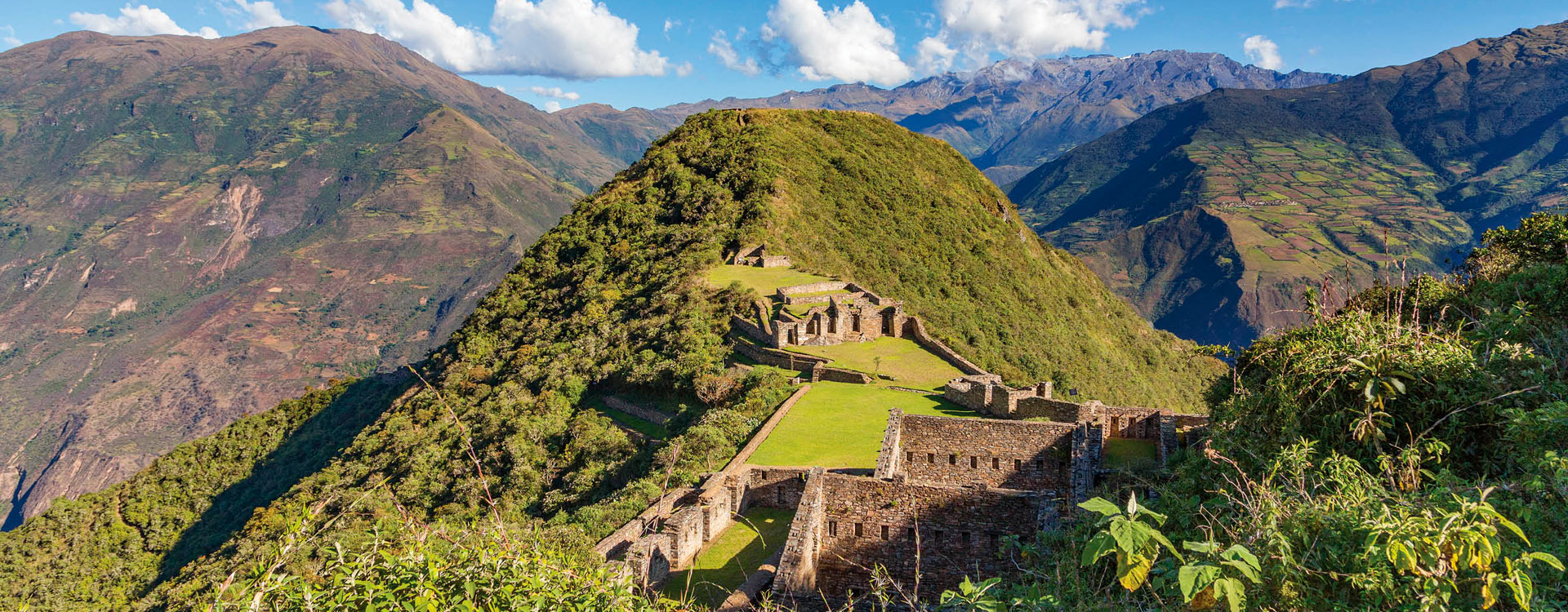Choquequiraoknown as the "lost city" of the Incas and sacred sister of Machu Picchu, is a challenge for modern adventurers and a treasure for history lovers. This archaeological site, located in the heart of the Peruvian Andes, offers an incomparable trekking experience that combines natural beauty, historical mystery and physical challenge. In this article, we explore in depth how to undertake this unique adventure, providing detailed guidance on the preparation, route, necessary equipment and complementary activities that make Choquequirao an unparalleled trekking destination.

Table of Contents
The Detailed Route to Choquequirao
Preparation and Starting Point
The journey to Choquequirao begins long before arriving at the starting point, with physical preparation that should begin months before. Acclimatization to the altitude is crucial, so it is recommended to spend several days in Cusco or nearby areas. The official starting point of the trek is the town of Cachora, from where hikers embark on a 58-kilometer round trip, which is usually completed in 4 to 5 days.
Key Stages of the Tour
- Capuliyoc viewpoint: The first stop offers panoramic views of the Apurimac Canyon, marking the beginning of the adventure.
- Playa Rosalina and the Apurimac River: A critical point where the river is crossed, followed by a demanding ascent to Marampata.
- Marampata: This is the last point before reaching Choquequirao, offering campsites and previews of the archaeological site.
- Choquequirao: Upon arrival, explorers encounter a complex of ruins that includes plazas, agricultural terraces and religious sectors, inviting contemplation and discovery.

Equipment and Physical Preparation
Essential Equipment
- Trekking backpack: It should be large enough to carry water, food, clothing for several days and camping equipment, but comfortable enough for long treks.
- Proper footwear: Hiking boots with ankle support are essential, as well as quality trekking socks.
- Appropriate clothing: Include breathable layers for daytime and thermal layers for cold nights, as well as waterproof clothing.
- Trekking poles: They provide stability and support on the varied terrain of the route.
Physical Preparation
Starting a training regimen focused on cardio and strength is essential. Long walks on varied terrain will help adapt the body to the demands of the trek.
Choquequirao trekking independent (without guide)
Do the Choquequirao trekking independently is a challenging adventure that requires detailed planning and thorough preparation. Although hiring a local guide offers benefits in terms of knowledge of the terrain and history, completing the trek on your own is possible and can be a rewarding experience. Here's how to prepare for this unique trek in the Peruvian Andes.
Research and Planning
- Study the Route: Familiarize yourself with the map of the trek, the distances between rest points and available water sources.
- Weather Conditions: Find out about the expected weather during your travel dates to avoid surprises and prepare the appropriate equipment.
- Entrance Permit: Although Choquequirao does not require an entrance permit like Machu Picchu, check the latest information on regulations and entrance fees.
- Maps and GPS: Carry detailed maps of the route and consider using a GPS device or mapping apps on your smartphone as a backup.
- Basic Orienteering Knowledge: Become familiar with basic orienteering techniques using a map and compass.
Security
- Inform Someone: Make sure someone you trust knows your trekking plans, including the route and estimated time of return.
- First Aid Kit: Prepare a first aid kit with essential items to treat minor injuries, bites and symptoms of altitude sickness.
- Satellite Phone or GPS Locator: Consider carrying a satellite phone or GPS locator for emergencies, especially in areas without cellular coverage.
Trekking Choquequirao without a guide is an intensely rewarding experience that offers a sense of independence and connection with nature. However, freedom comes with great responsibility: prepare adequately, respect the natural and cultural environment, and prioritize safety at all times.
Complementary Activities: Enriching the Experience
Biodiversity Observation
The route to Choquequirao is rich in biodiversity, offering opportunities to observe everything from unique orchids to endemic birds such as the Andean condor. The presence of wildlife, including the Andean bear, adds special value to this experience.
Camping and Nature Connection
Camping is an integral part of the trip, allowing adventurers to connect with nature in a very direct way. Designated camping areas offer the possibility of resting under a starry sky, adding a magical element to the Choquequirao experience.
Choquequirao and Saywite Community: A Cultural and Natural Treasure
Exploring Choquequirao involves delving into the rich history of the Saywite-Choquequirao-Ampay Commonwealth. Visits to Saywite, with its sculpted monolith, before or after Choquequirao, offer a deeper understanding of the Inca cosmovision. These sites are not only important archaeologically, but also play a crucial role in biodiversity conservation and in supporting local communities.
Tips for Responsible Travel
- Hiring local guides: In addition to enriching the experience with their knowledge, they contribute to local economic development.
- Minimum impact practices: Following established routes, taking all trash back and using water sources responsibly helps preserve this site for future generations.
The Choquequirao trek is an invitation to adventure, discovery and reflection. With proper preparation, the necessary equipment and a responsible approach, trekkers can fully enjoy this unique experience, connecting with nature, history and culture in a deep and meaningful way. Choquequirao is not only one of Cusco's most important tourist destinations in Cusco; it is a journey of personalChoquequirao is a journey of personal and collective discovery that challenges, inspires and transforms those who dare to undertake it.

